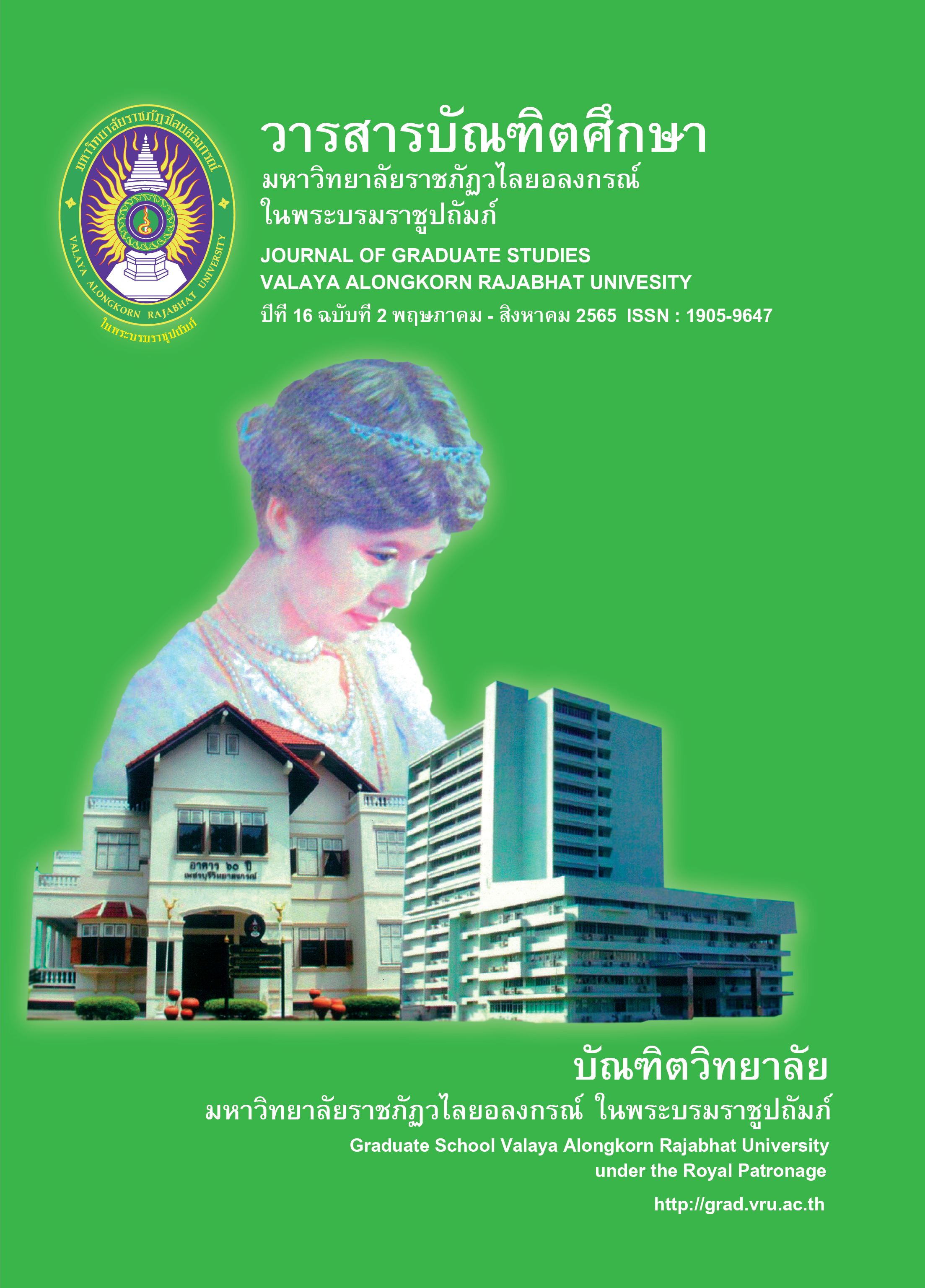THE METHODS OF CREATING DRAMATIC ARTS FROM MYTHOLOGIES
Main Article Content
Abstract
This article was aimed to Creating Dramatic Arts from Mythologies. The researcher applied the qualitative and creative research’s procedures together with the research tools which were the study of academic documents, interviews, informative media, site survey and the researcher’s experience. After that, the researcher analyzed the obtained information to acquire the method of creating dramatic arts from mythologies.
The result of the research found that this creative method was able to be divided into eight performing elements as 1) the design of the performance that can be separated into 3 parts, 2) the audition for performers that selected from the physical characteristic and performing ability according to the modern dance called Ballet,
3) the choreography that imagined and imitated the movement of jellyfish including the Thai dance movement combining with the modern gestures, 4) the design of performing tools that the researcher created the plastic frame covering with clothes mythically symbolized as the giant jellyfish, 5) the design of sound and performing music that was the combination between Thai music and international music arranging by electronic music instruments, 6) the design of costumes that referred to the character of the jellyfish and the modern technology focusing on the shape of female performers in order to present the beauty myth, 7) the design of performing stage that explained the relationship between the choreography, the dancing deployment, the lighting management, the researcher selected the main Hall of Rajamangala University of Technology Thanyaburi as the place for the performance and 8) the design of lighting that supported the atmosphere of the performance to be more perfect and attracted the audience’s feeling, emotion and imagination as well.
Article Details

This work is licensed under a Creative Commons Attribution-NonCommercial-NoDerivatives 4.0 International License.
บทความทุกเรื่องได้รับการตรวจความถูกต้องทางวิชาการโดยผู้ทรงคุณวุฒิ ทรรศนะและข้อคิดเห็นในบทความ Journal of Global of Perspectives in Humanities and Social Sciences (J-GPHSS) มิใช่เป็นทรรศนะและความคิดของผู้จัดทำจึงมิใช่ความรับผิดชอบของบัณฑิตวิทยาลัย มหาวิทยาลัยราชภัฏวไลยอลงกรณ์ ในพระบรมราชูปถัมภ์ กองบรรณาธิการไม่สงวนสิทธิ์การคัดลอก แต่ให้อ้างอิงแหล่งที่มา
References
Charassri, N. (2007). Narai Avatara, Performing the Thai Ramayana in The modern World. Bangkok: Amarin.
Conway, D. V. P, White, R. G., Hugues, D. C. J., Gallienne, C. P. and Robins, D. B. (2003). Guide to the Coastal and Surface Zooplankton of the South – Western Indian Ocean. DEFA Darwin Initiative Zooplankton Programme Version 1 June 2003. Marine Biological Association of the United Kingdom Occasional Publication No 15.
Daly. M., Brugler. M. R., Cartwright, P., Collins, A. G., Dawson. M. N., Fautin.D. G., France, S. C., McFadden. C. s., Opresko, D. M., Rodriguez, E., Romano, S. L. and Stake, J. L. (2007). The Phylum Cnidaria: a review of phylogenetic patterns and diversity 300 years after Linnaeus. Zootaxa.
Jacques, D. (1976). Of Grammatology. Trans. Gayatri Chakravorty Spivak. Baltimore: Johns Hopkins University Press.
Nopudomphan, K. (2014). Kānsưksā wikhro̜ nǣothāng kānʻō̜kbǣp khrư̄ang tǣng ō̜kāi nātsin niphon (nātsinthai) khana sinlapakam sāt Mahāwitthayālai Sīnakharinwirōt rawāng pīkānsưksā 2546-2550 [The Analytical Study on Designs of Costume for Dance Theses (Thai Dance) by Graduates of Srinakharinwirot University’s Faculty of Fine Arts, between 2003- 2007]. Institute of Culture and Arts Journal. 16(1), 79-92.
Ponsaratoon, P. (2006). māyā khati khwām ngām khō̜ng sattrī Thai Phō̜.Sō̜. 2481-2516 [Thai Women’s Beauty Myth (1938-1973)]. Master’s thesis. Chulalongkorn University.
Saitongkum, J. (2018). krabūankān sāngsan ngān nāttasin chut sakkāra thēwa rāt [The Creative Process of Thai Dramatic Art- Sakkaratewarat Dance]. Research and Development Journal Suan Sunandha Rajabhat University. 10(1), 103-117.
Wisedsing, S. (2014). ʻattharot nai nāttasin phān nāttakam nǣo mai rư̄ang Nārāi ʻawatān [Flavour of Thai Dance through the Modern Performance Narai Avatara]. Institute of Culture and Arts Journal. 15(2), 135-140.


